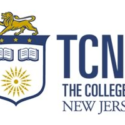Please see the articles linked below highlighting recent achievements from some of our Physics department students and faculty:
Physics department energized by grant to continue nanoparticle research

Please see the articles linked below highlighting recent achievements from some of our Physics department students and faculty:
Physics department energized by grant to continue nanoparticle research

Last week, Dr. AJ Richards, Associate Professor in the TCNJ Physics department, attended the Physics Teacher Education Coalition’s annual conference and accepted the PhysTEC 5+ Club Award. The PhysTEC 5+ Club honors institutions that certified at least 5 new physics teachers in the previous year; only 7 institutions nationwide achieved this mark. For more information on this award, please see the Physics Teacher Education Coalition’s webpage linked here.

TCNJ physics majors Dean Klunk, Louis Miller, Michael Pedowitz, and Michael Polania as well as biology majors Ashley Fernandez and Skylar D’angiolillo presented their research undertaken with Dr. Lauranne Lanz and Dr. Mariah MacDonald at the recent American Astronomical Society (AAS) meeting in Seattle.
Dean Klunk, Louis Miller, post-baccalaureate researcher Isabella Carlton, and Dr. Lanz presented posters on research to better understand the activity of supermassive black holes using X-ray observations. Dr. Lanz’s poster summarized a recent paper published by the Astrophysical Journal on activity measured using short Chandra X-ray Observatory observations of 12 post-starburst galaxies, which required developing a new methodology called forward-modeling. Louis showed early results extending this work to an additional 30 galaxies with archival Chandra observations, and Isabella used much deeper observations taken with the XMM-Newton Observatory to extract and fit spectra of two post-starbursts, confirming the forward-modeling results. Dean showed the results of implementing modeling of the background in this methodology using Swift/BAT galaxies. Dr. Lanz also presented in a splinter session on the possible breadth of science on galaxies that could be achieved with a proposed X-ray telescope called AXIS.
Dr. MacDonald’s four students, Skylar D’angiolillo, Ashley Fernandez, Michael Pedowitz and Michael Polania gave talks on the results of their research on exoplanet dynamics. Skylar showed that the unique dynamic interactions between two of the planets in the Kepler-305 system, known as mean motion resonance, allowed an estimation of their masses, such that one planet is likely to be terrestrial, two are likely mini-Neptunes with extended atmospheres, and the last planet has an inflated atmosphere with a bulk density less than water. Ashley and Michael Polania presented their results of the resonant system Kepler-80, using dynamics to measure the mass and orbit of its outermost system and examining the possibility of an additional planet in the system. Michael Pedowitz discussed the stability and habitability of planets orbiting two stars over a billion years, finding that most planets orbiting stars of similar mass are too cold to host Earth-like life and that most of these planets experience large temperature fluctuations on very short timescales (ΔT > 50 K, t ≈ 40 days), requiring more in-depth radiative transfer modeling to fully explore their habitability. Dr. MacDonald gave two talks: one focused on the results of ungrading PHY 162 Astronomy: Planets and the lessons learned in applying this technique to a large, liberal learning STEM course; the other discussed a new software created to identify, confirm, and characterize resonances, which was applied to 66 new resonant systems.
Two recent graduates also presented their results at AAS. Nick Tusay (class of 2020; now a graduate student at Penn State) gave a talk on his work searching for signatures of technology use with SETI observations. Nikhil Patten (class of 2021; now a graduate student at University of Wyoming) presented a poster on spectra of massive stars that power bowshock nebulae.

TCNJ Physics and Education professors recently collaborated on a blog post about the current state of Physics Education in the US for the AAAS ARISE website. The blog post can be read here: https://aaas-arise.org/2022/10/19/wherefore-art-thou-physics-teacher/.

The TCNJ Physics Department welcomes Dr. Padma Ganesh as the HHMI Fellow and Visiting Professor of Physics starting this Fall. Dr. Ganesh graduated with a PhD in Physics from the Indian Institute of Technology, Chennai, India, where she specialized in experimental condensed matter. Later, she worked as a postdoc at India’s National Physical Laboratory studying intercalated carbon fibers and testing metal matrix composites. Dr. Ganesh is exploring the use of graphene as a potential battery material of the future. She is also working on research questions in Physics Education to understand and quantify how students apply their conceptual knowledge to think critically about ideas they encounter in daily life and on social media. Dr. Ganesh is currently teaching General Physics I, where she employs active learning and the use of videos to help teach conceptual understanding. She is also interested in understanding what role, if any, social media plays in reinforcing physicist stereotypes or enabling the exclusion of certain groups in physics.

TCNJ physics majors Nick Pyontek, Dean Klunk, Pierce Wickenden, Alex Stourton, and Brennan Neubauer are in Berlin, Germany for a 3-week course in photonics with Prof. David McGee. The students will work with McGee and collaborators at the Berlin Institute of Technology (BHT) as part of an international grant between TCNJ and BHT.

A research article by Associate Professor of Physics Dr. AJ Richards has recently been featured on the podcast SciPod. The podcast episode is titled “Teaching Physics through Kinaesthetic Learning Activities”, and can be found by going to the following link: https://www.scipod.global/teaching-physics-through-kinaesthetic-learning-activities-dr-aj-richards/

Physics major Mary McMullan (Class of ’22) is the recipient of this year’s NSF Fellowship Award, and Professor of Physics Dr. Tuan Nguyen has received an NIH (National Institute of Health) award.

The College of New Jersey’s Physics department was recently recognized by the Physics Teacher Education Coalition (PhysTEC) for its outstanding contributions to the education of future physics teachers. The College of New Jersey graduated 6 well-prepared physics teachers in the 2020-2021 academic year. To recognize this achievement, The College of New Jersey has earned membership in the 5+ Club, the highest award available for teacher preparation from the PhysTEC, a joint project of the American Physical Society (APS) and the American Association of Physics Teachers (AAPT). More information on this award can be found at https://phystec.org/awards/five-plus-club.

In the very early morning of Friday November 19th, the full Moon slipped into the Earth’s shadow in an almost complete lunar eclipse, the longest in the century. This eclipse is particularly long because the Moon is at its farthest distance from the Earth on its elliptical orbit. During an eclipse, the Moon loses access to most of the sunlight that it usually reflects and can only reflect the small portion of redder light that bend around the Earth and through its atmosphere on the way to the Moon.
The four pictures below were taken by three physics majors. Connor McNeill (Class of 2024) and Michael Pedowitz (Class of 2024) took pictures that placed the lunar eclipse in the broader stellar context. In Connor’s picture, you can see Orion’s belt and sword to the left of the still relatively bright Moon (Fig. 1). Michael’s shows that the Moon was located right next to the Pleiades cluster, a set of seven bright stars that are sometimes called the Seven Sisters (Fig. 2).
Connor and Dean Klunk (Class of 2024) also took images of the Moon through a telescope. Connor used his own 3in telescope (Fig. 3), while Dean operated the physics department’s 11in telescope from the rooftop observatory (Fig. 4). The observatory is open to the students as well as the public on clear nights Mondays to Thursdays from 8pm to 10pm.
Fig. 1: The Moon (bright object on the right) was located close Orion, whose belt and sword can easily be seen at the left on the image. Picture Credit: Connor McNeill
Fig. 2: To the upper right of the Moon, the cluster of stars is the Pleiades, sometimes called the Seven Sisters. Picture Credit: Michael Pedowitz
Fig. 3: The Moon taken through a 3in telescope during the maximum of the partial eclipse. The white edge to the upper right shows that the eclipse was not complete. The red color is the result of sunlight passing through the Earth’s atmosphere before reaching the Moon. Picture Credit: Connor McNeill
Fig. 4: The Moon as seen through TCNJ’s 11in telescope. This larger telescope shows more detail with the mare (dark regions) becoming especially visible, as well as Tycho’s crater (lower right).
Physics Department
Science Complex, Room P123
The College of New Jersey
P.O. Box 7718
2000 Pennington Rd.
Ewing, NJ 08628